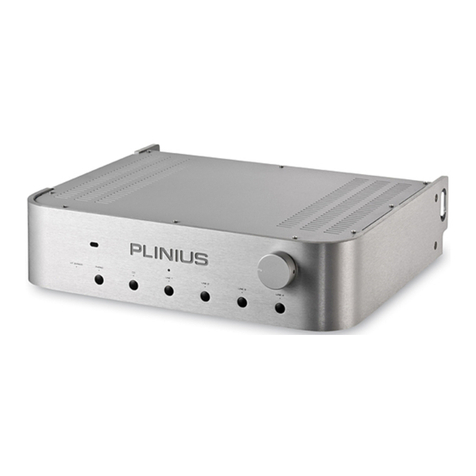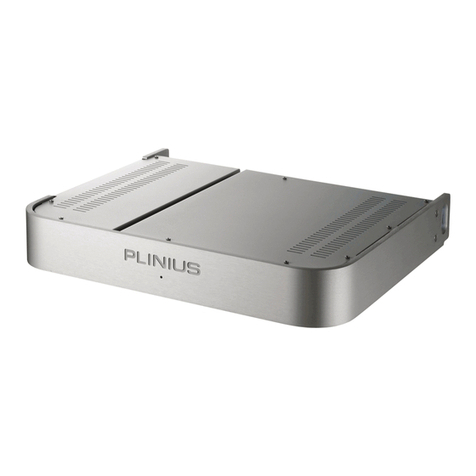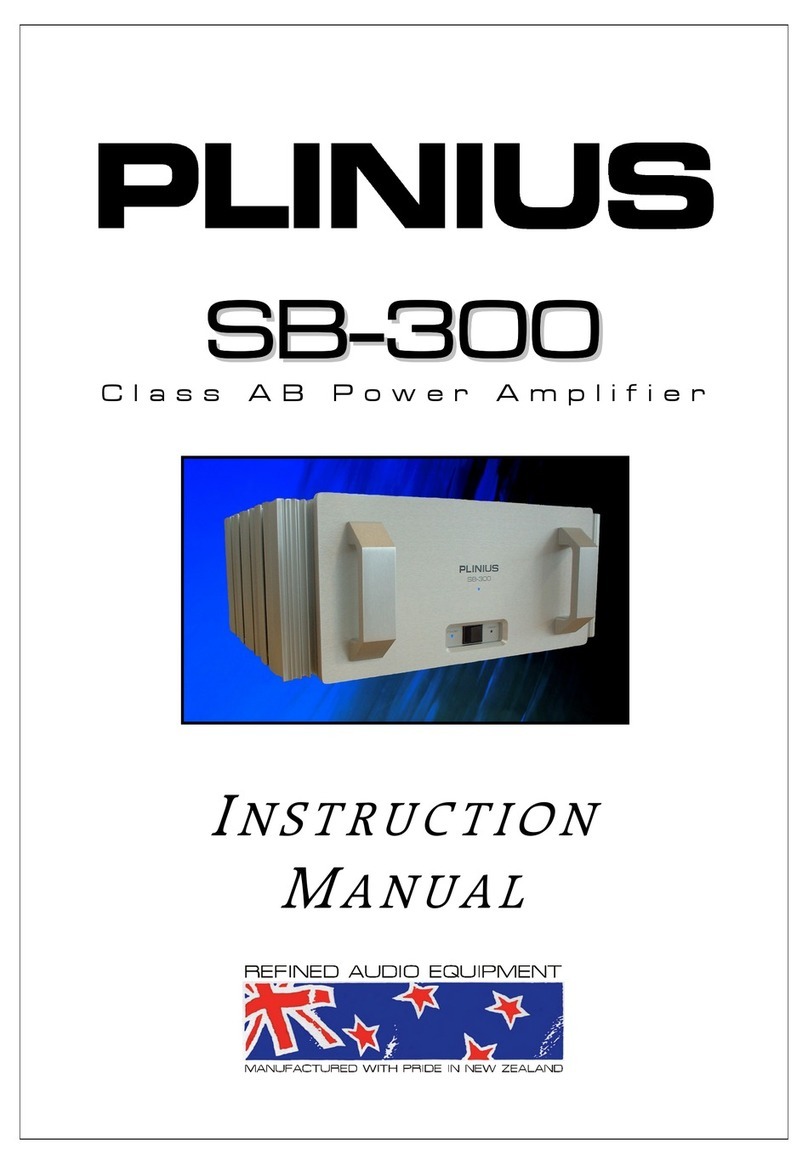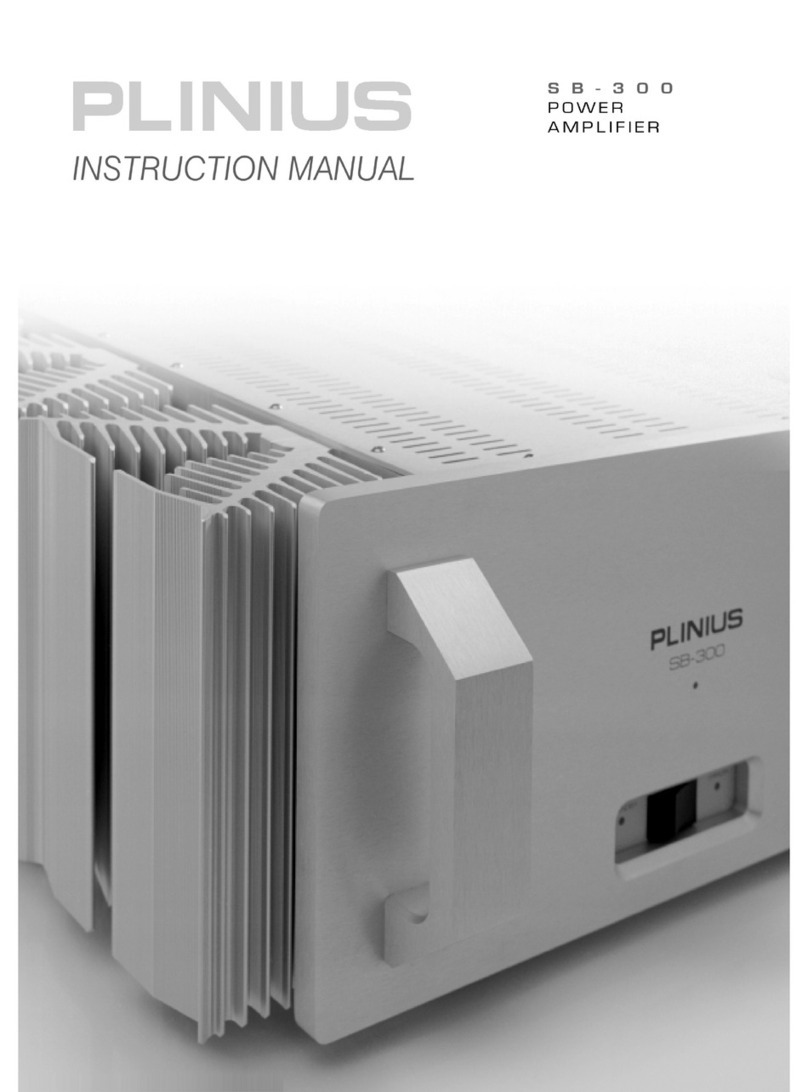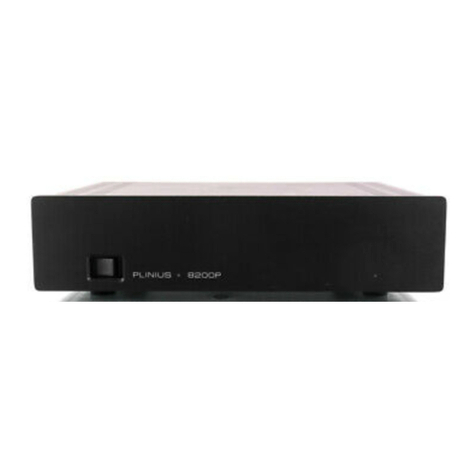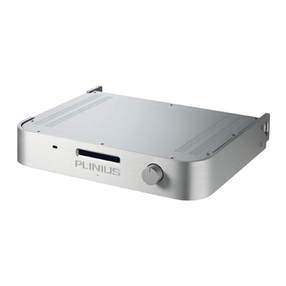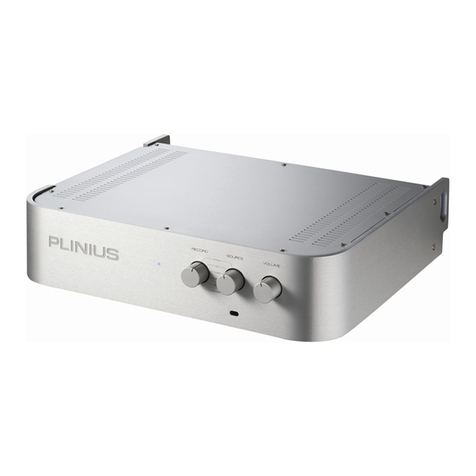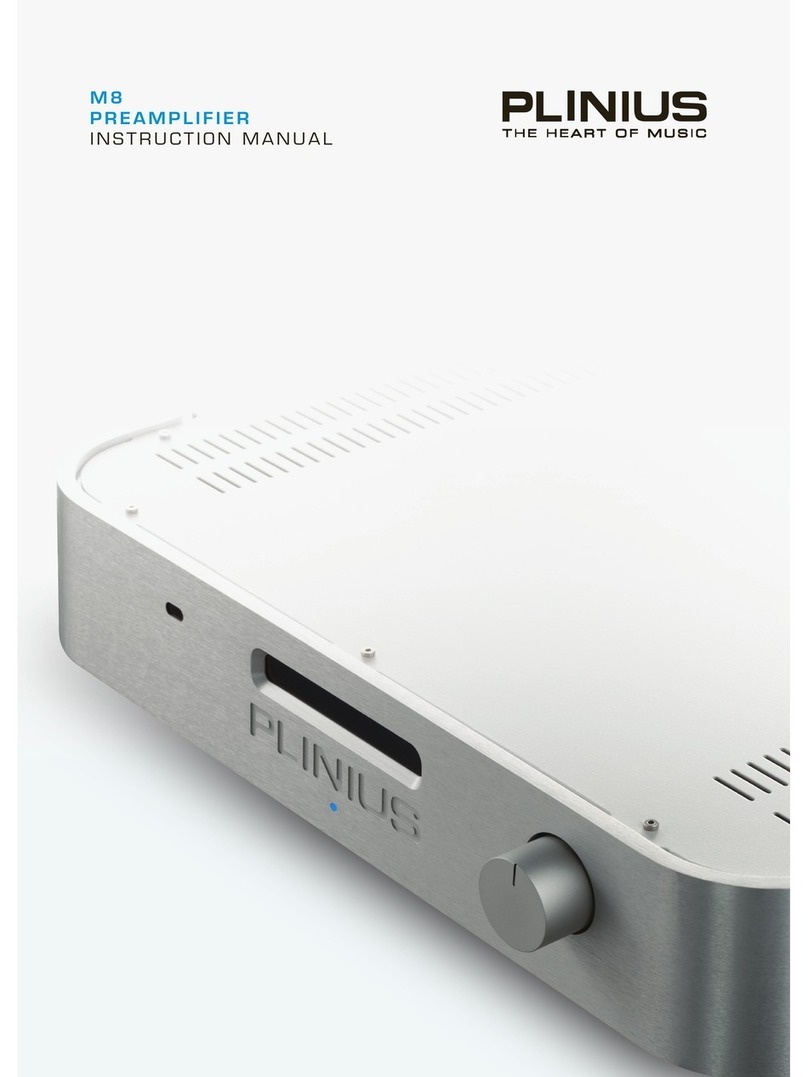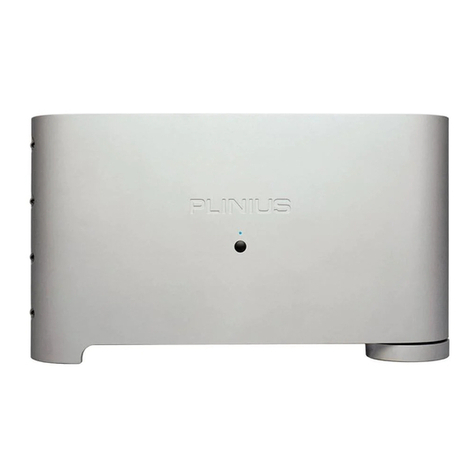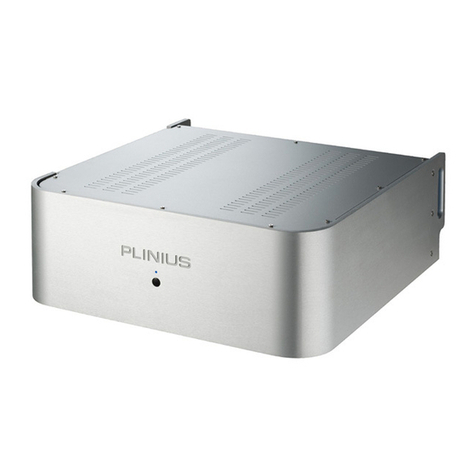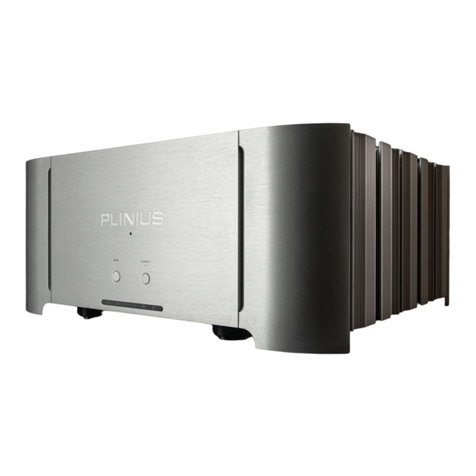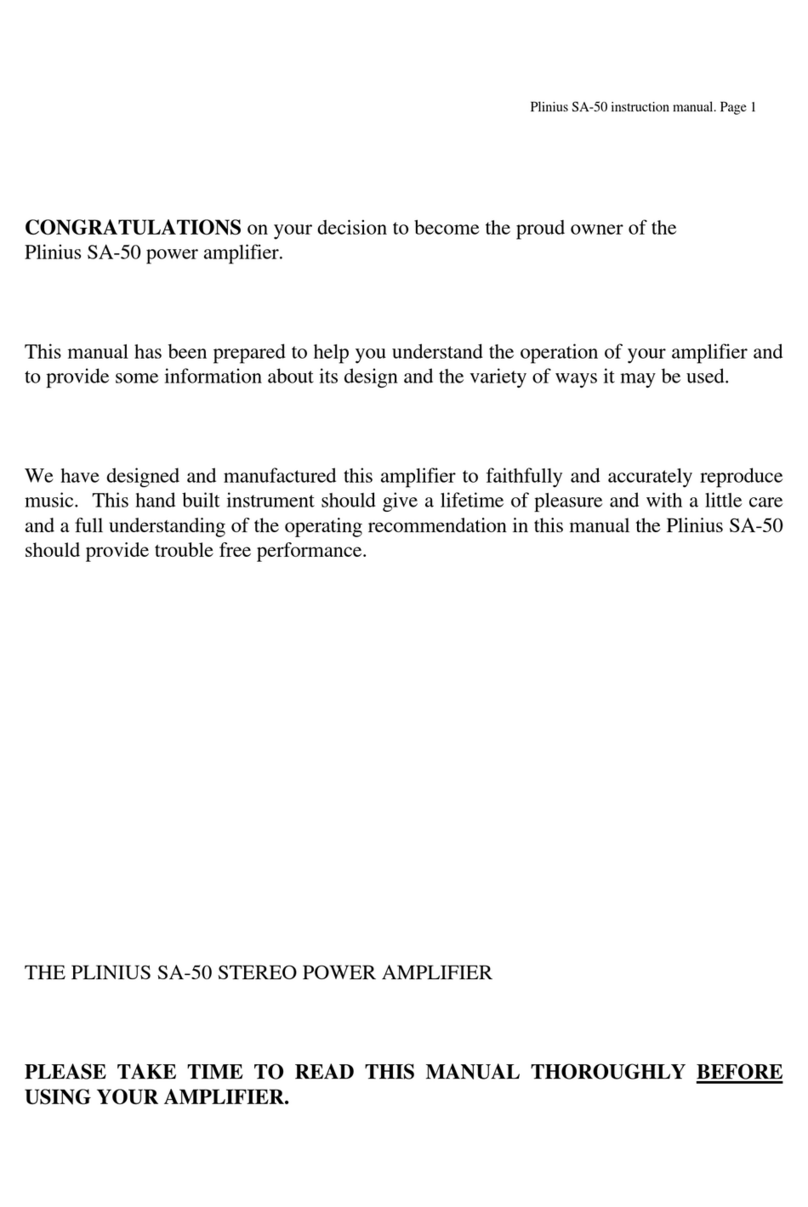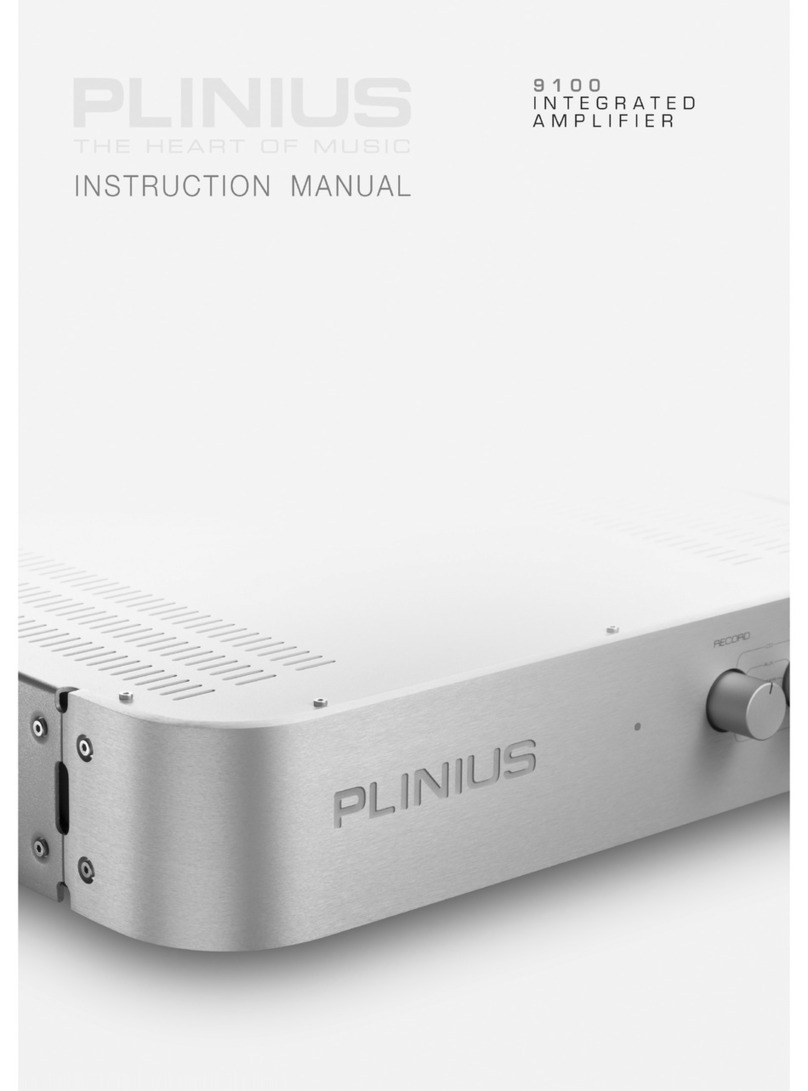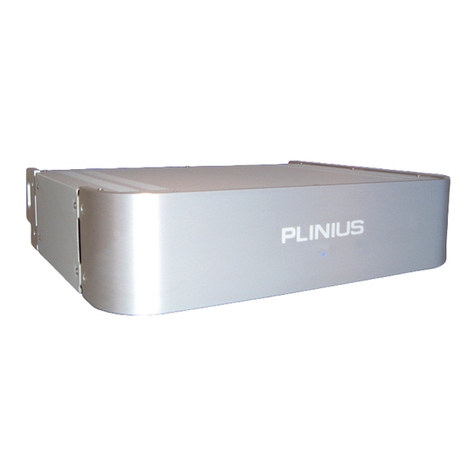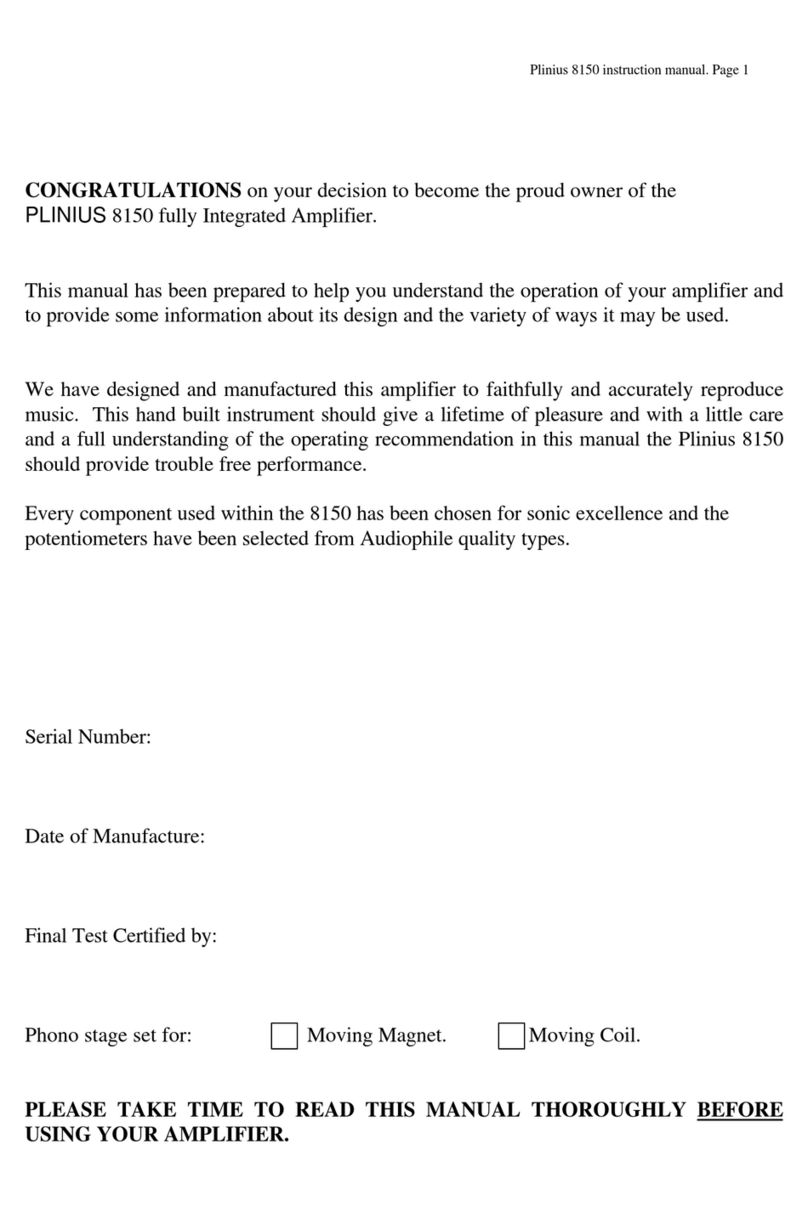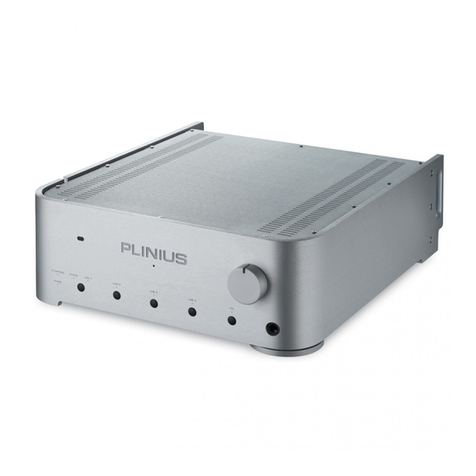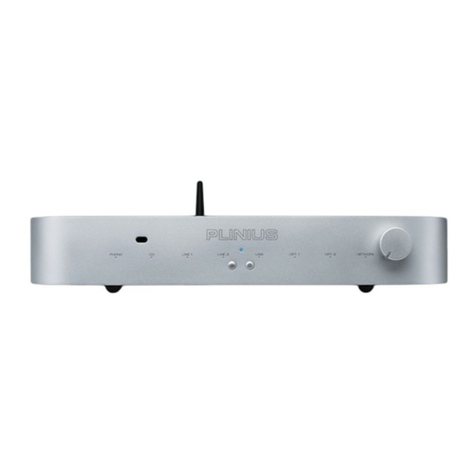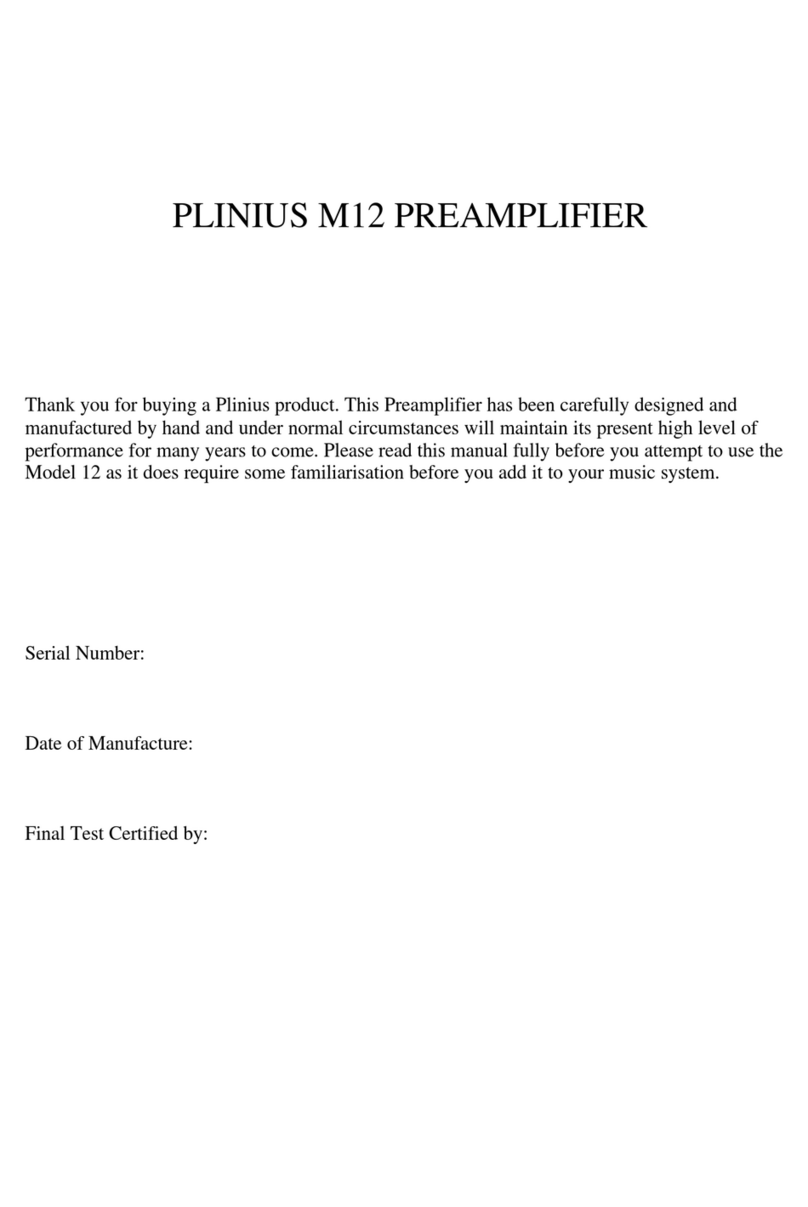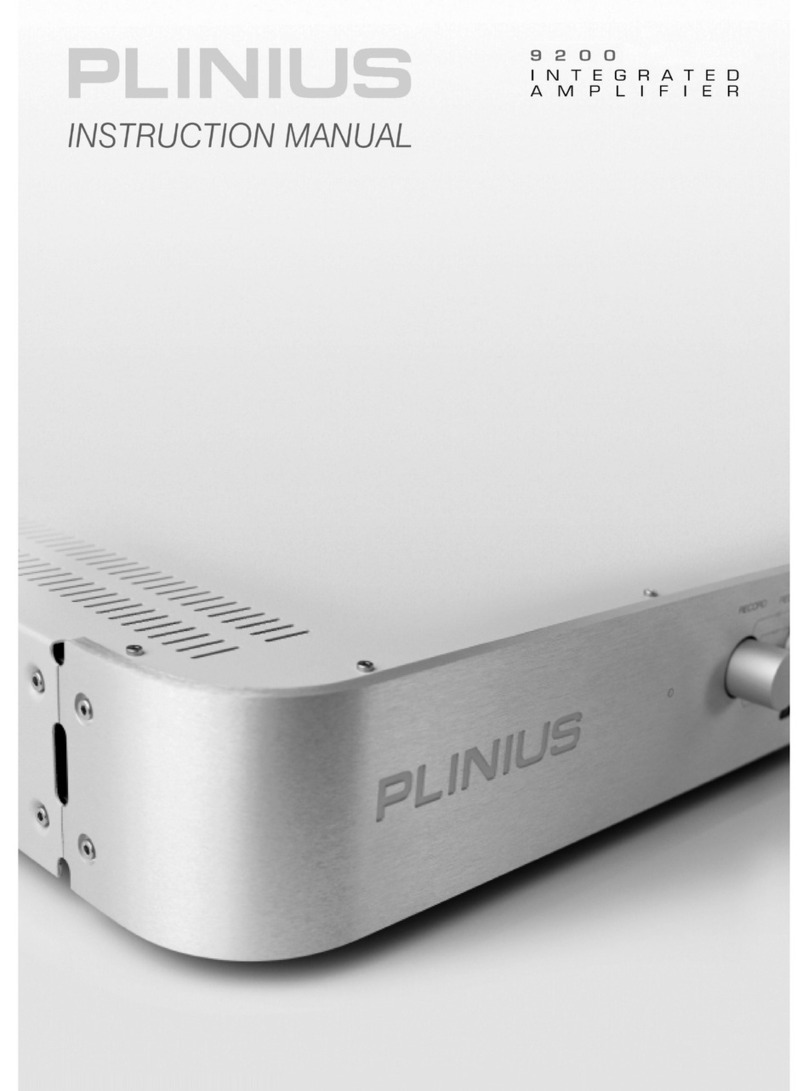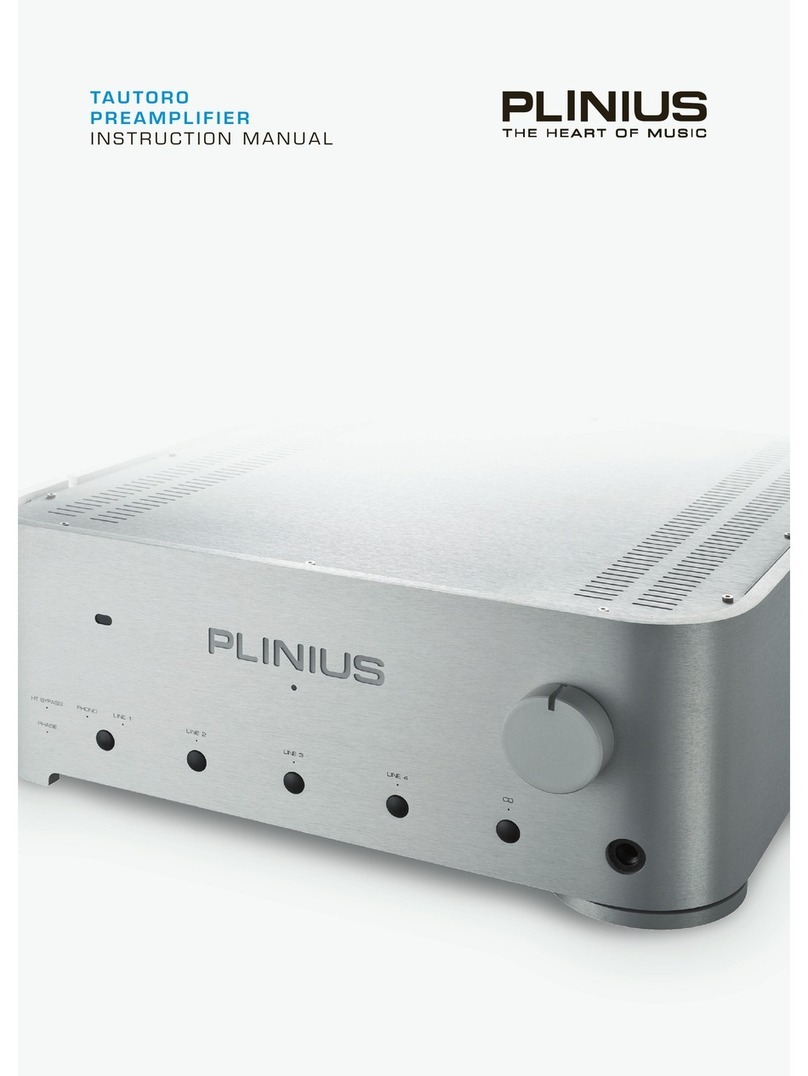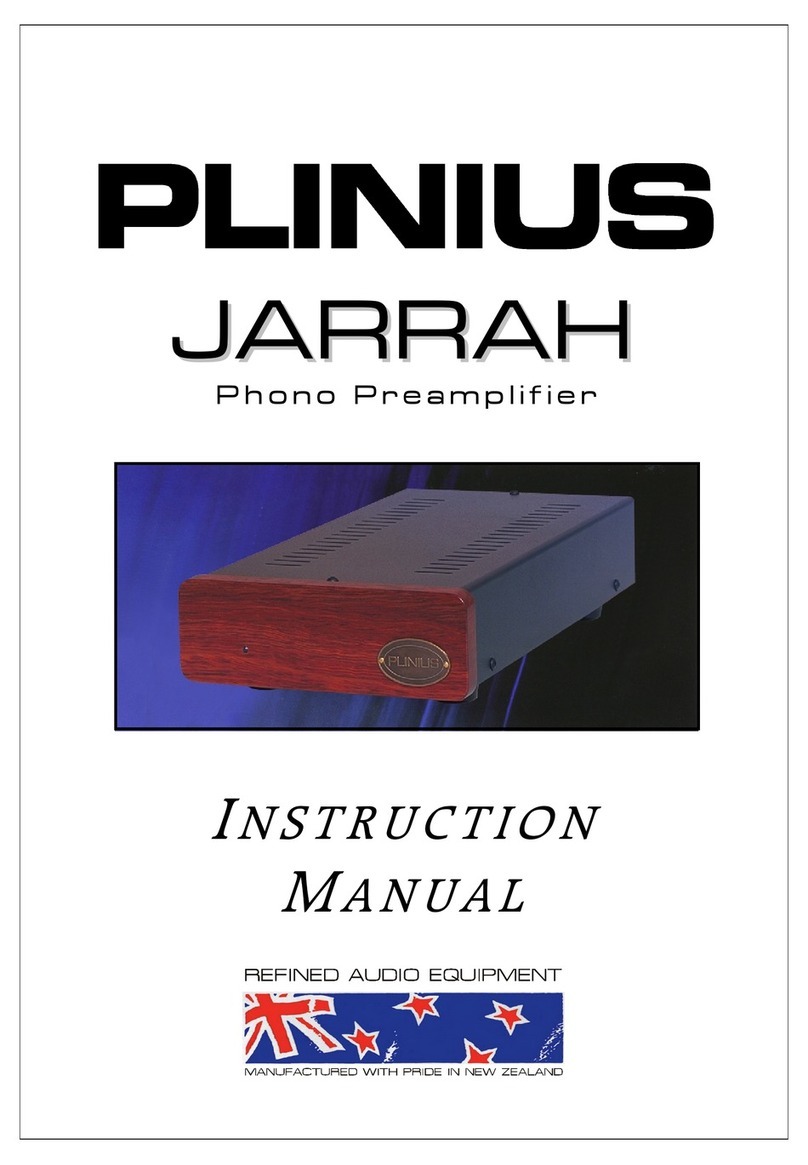
8PLINIUS REFERENCE M-10
4. INPUT SELECTION SWITCH
This switch directly above the XLR input is used to select the pair of RCA or XLR input
sockets UP towards the RCA selects the RCA input connections, while DOWN selects XLR
inputs.
5. HT BYPASS INPUT
This input is for use specically with home theatre processors and AV receivers. In some
circumstances you may wish to use the Plinius system as the front two channels of a
surround or home theatre environment. The HT Bypass input can be used for this purpose,
as any signal connected to these inputs will feed to the outputs, bypassing the volume
control. HT Bypass mode is accessed by the remote or the trigger input.
6. PRE OUT
The Pre Out connection is provided to enable the Reference M-10 dual mono preamplier
to be connected to an external power amplier.
7. LINE OUT
These RCA outputs are situated next to Pre Out and are provided to interface to line level
recording devices for archiving, or transferring to portable media. The outputs are always
live with the signal of whichever source is selected at the time of recording.
8. REMOTE TRIGGER INPUT/OUTPUT SOCKETS
In order to integrate more eectively into a home theatre system, the Reference M-10
has a remote trigger input socket on the rear panel. By connecting a processor or source
component with a remote trigger signal to this socket, the Reference M-10 can be
switched between HT Bypass and standby modes. When in standby the preamplier draws
less current and will operate at minimum temperature. This may be of advantage in multi-
amplier and/or remote installations.
The Reference M-10 also features two remote trigger output sockets. By connecting this
trigger output to other system components, the entire system can be put in and out of
standby by the source component.
9. REMOTE IR INPUT
This socket is for connecting to an external remote control sender. Some companies
manufacture these devices to enable multi-room remote control. Please see your Plinius
dealer for further advice.
10. GROUND LIFT SWITCH
This switch allows the signal ground to be disconnected from the chassis. In some
installations a hum loop may exist due to duplicate ground paths from dierent
equipment. Use this switch to remove the connection from 0V to ground thus allowing
some exibility in your particular set-up.
